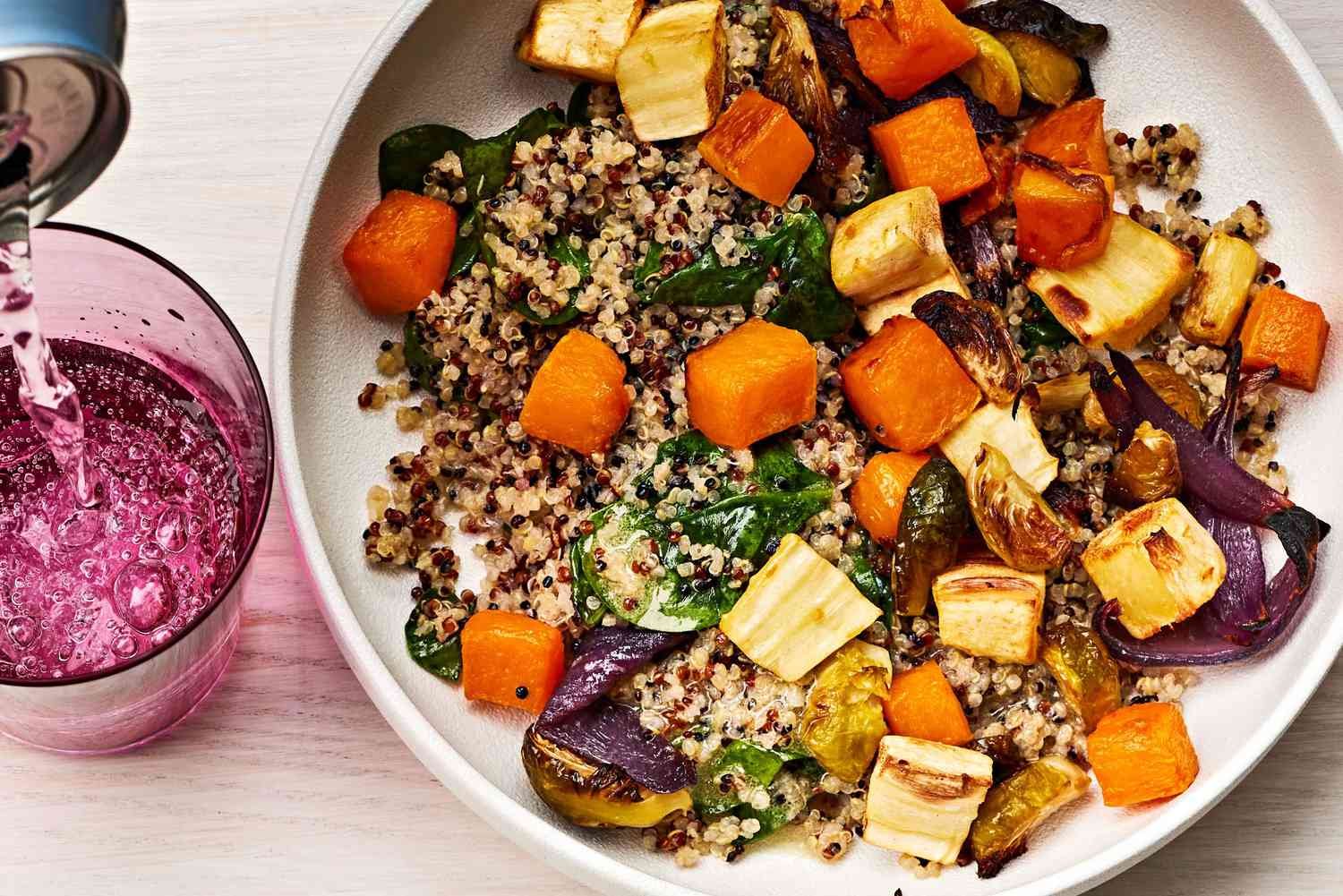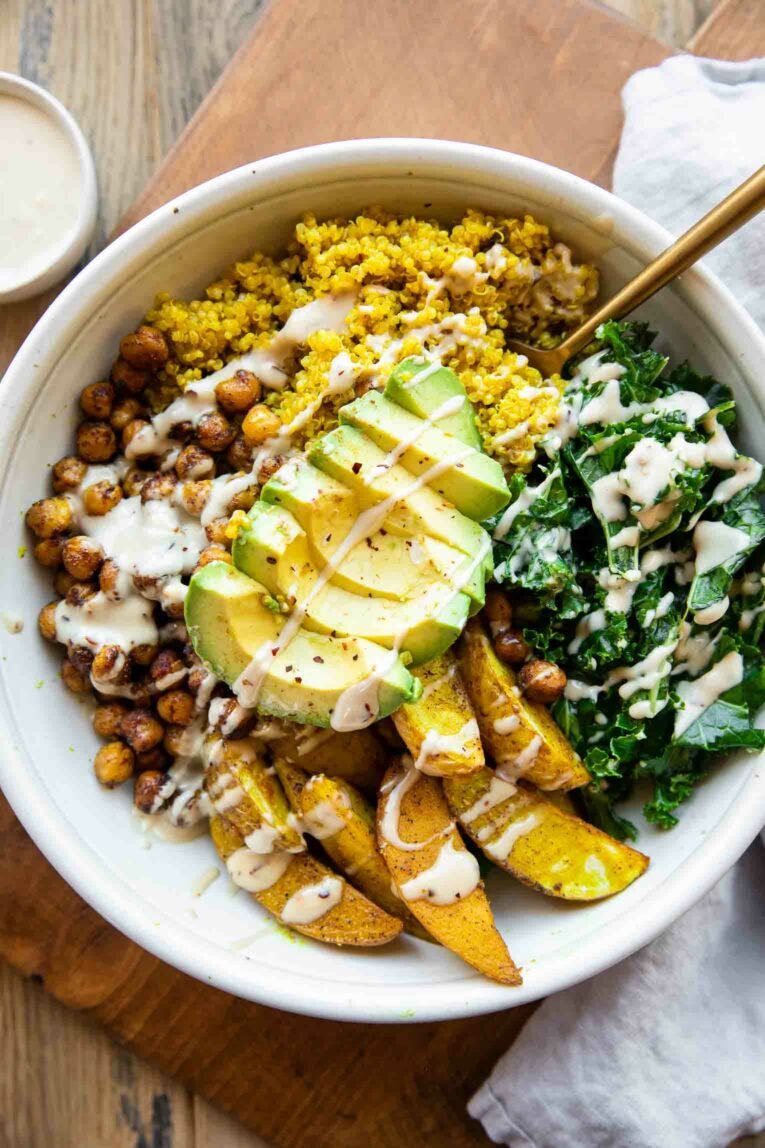Are you tired of the same old dinner routine and looking for meals that your whole family will love? Do you want to serve dishes that are not only delicious but also packed with nutrients?
You’re not alone. Finding healthy family meals for dinner that everyone enjoys can be a real challenge. But imagine the satisfaction of seeing clean plates and happy faces around your dining table. You’ll discover a variety of nutritious recipes that are easy to prepare and sure to please even the pickiest eaters.
Get ready to transform your dinner times into moments of joy and health!

Credit: www.foodnetwork.com
Benefits Of Family Meals
Sharing meals as a family brings more than just good food. It’s a moment to connect, laugh, and share stories. The benefits are vast and touch every family member. From health improvements to emotional bonds, family meals offer a unique opportunity to enhance life at home.
Improved Nutrition
Family meals often lead to healthier eating choices. Home-cooked dishes use fresh ingredients. These meals include more fruits and vegetables. Eating together encourages balanced meals that meet everyone’s dietary needs. This habit reduces the intake of processed foods.
Stronger Family Bonds
Regular family dinners strengthen relationships. Conversations flow easily around the table. Sharing stories and experiences brings family members closer. This time provides a chance to offer support and understanding. It builds trust and a sense of belonging.
Better Academic Performance
Children who eat with their families tend to excel in school. These meals boost communication skills. They help children learn new words and ideas. Engaging in discussions improves cognitive abilities. Kids feel more confident in expressing themselves.
Reduced Stress Levels
Family meals create a calming environment. Sharing a meal can reduce daily stress. It offers a break from busy schedules. Eating together promotes relaxation and mindfulness. Families find solace in each other’s company.
Improved Social Skills
Eating as a family enhances social interaction. It teaches manners and respect. Children learn to listen and share. This setting encourages polite conversation and empathy. Family dinners shape well-rounded individuals.
Planning Balanced Dinners
Balanced dinners bring families together with healthy meals. Fresh veggies, lean proteins, and whole grains create nutritious and tasty plates. Simple recipes make cooking enjoyable and easy for everyone.
Planning balanced dinners is crucial for maintaining a healthy lifestyle for your family. It’s not just about what you eat, but how you approach mealtime. Ensuring each dinner is nutritious and balanced can be both fun and rewarding, especially when the whole family gets involved. Break down the process into simple steps and you’ll soon find it easier to whip up meals that everyone will love.Understanding Food Groups
The foundation of a balanced dinner lies in understanding food groups. Imagine a plate divided into sections: fruits and vegetables, grains, protein, and dairy. Are you giving each group the attention it deserves? Start by making half your plate fruits and vegetables. They offer essential vitamins and minerals. Add a portion of grains like rice or whole wheat pasta. These are energy powerhouses. Don’t forget protein—choose lean meats, beans, or tofu. They help in muscle building and repair. Finally, add a small amount of dairy or a dairy alternative for calcium and vitamin D.Creating A Weekly Meal Plan
Think of meal planning as a creative challenge. Start by drafting a menu for the week. What meals do you and your family enjoy? Include variety to keep things interesting. Planning ahead saves time and reduces stress. You’ll find yourself less tempted to opt for fast food or takeout. Use a simple table to jot down meals for each day. This visual aid can help spot gaps in nutrition or repetition.Incorporating Family Favorites
Balancing health and taste can be tricky. But who said healthy meals can’t be delicious? Do you have family favorites that need a healthy twist? Consider tweaking recipes to add more vegetables or substitute unhealthy ingredients. For example, swap white rice for quinoa or add spinach to your usual pasta dish. This way, you respect tradition while boosting nutritional value.Getting The Kids Involved
Let the kids have a say in dinner planning. Involving them can turn mealtime into a fun activity. Ask them about their favorite foods and brainstorm healthy ways to prepare them. Would they be interested in choosing the vegetables for tonight’s salad? Let them help with simple tasks like washing veggies or stirring a sauce. This not only teaches them about healthy eating but also builds their cooking skills.Staying Mindful Of Portions
Portion control is key to a balanced diet. It’s easy to serve too much, especially when cooking for a family. How much is enough to satisfy hunger without overindulging? Use smaller plates to naturally reduce portion size. Consider serving dishes directly from the kitchen, rather than placing serving bowls on the table. This can prevent unnecessary second helpings.Reflecting On Dinner Success
After dinner, take a moment to reflect. Did the meal fulfill nutritional needs? Was it enjoyable for everyone? Discuss what worked and what didn’t. This feedback loop is essential for continuous improvement. Celebrate small wins like trying a new vegetable or reducing sugar in a recipe. Engage your family in this process to make it a shared journey toward healthier living. Remember, planning balanced dinners is not about perfection. It’s about making informed choices and enjoying the process.Incorporating Vegetables
Incorporating vegetables into family meals can boost health and happiness. Veggies offer essential nutrients that support growth, energy, and immune function. Encouraging kids to eat more vegetables can be challenging. Creative approaches can make veggies appealing and fun.
Creative Veggie Dishes
Create colorful veggie stir-fries with bell peppers, carrots, and broccoli. Use herbs and spices to enhance flavors without extra calories. Try zucchini noodles or cauliflower rice for a twist on pasta dishes. Serve grilled veggies with a sprinkle of parmesan for added delight. Experiment with veggie tacos using lentils and mushrooms.
Make veggie pizzas with a cauliflower crust topped with spinach and tomatoes. Prepare stuffed bell peppers with quinoa, black beans, and corn. Blend veggies into soups for warmth and comfort on cold evenings. Roast vegetables like sweet potatoes and beets for sweet and savory side dishes.
Sneaky Veggie Tips For Kids
Blend spinach into fruit smoothies for a hidden dose of greens. Grate carrots into sauces and stews for extra nutrition. Bake muffins with shredded zucchini or carrots for a sweet surprise. Add pureed vegetables to mac and cheese for creamy goodness. Create veggie patties with beans and peas for burger nights.
Mix chopped veggies into meatballs or lasagna for a tasty treat. Use creative shapes to make veggies fun and exciting. Offer veggie sticks with hummus for a healthy snack option. Make veggie chips from kale or sweet potatoes for crunchy delights. Make veggie-based dips for chips or breadsticks.

Credit: www.familyfoodonthetable.com
Protein-packed Options
Protein is vital for family meals. It builds muscles and keeps energy up. Healthy family dinners need protein-packed options. They satisfy hunger and taste great. Explore lean meats, poultry, and plant-based proteins. These choices make meals nutritious and exciting.
Lean Meats And Poultry
Lean meats offer great protein. Chicken breast is a top choice. It’s low in fat and high in protein. Turkey is another lean option. It provides essential nutrients without extra calories. Lean beef is also excellent. Choose cuts like sirloin or tenderloin. These cuts have less fat but plenty of flavor.
Grill or bake these meats. This keeps them healthy. Add herbs and spices for extra taste. Lean meats and poultry satisfy without feeling heavy. They make family dinners both healthy and enjoyable.
Plant-based Proteins
Plant-based proteins are vital too. They offer protein without animal products. Beans and lentils are popular choices. They are high in fiber and protein. Tofu is versatile. It absorbs flavors well and is low in fat. Quinoa is another plant-based protein. It’s a complete protein and gluten-free.
Combine these proteins with vegetables. It creates a balanced meal. Try a bean chili or lentil soup. A tofu stir-fry with veggies is delicious. Quinoa salad with beans is light and filling. Plant-based proteins are diverse and healthy. They fit well in family dinners.
Whole Grains For Dinner
Whole grains are a fantastic choice for family dinners. They offer nutritional benefits and add variety to meals. Whole grains are not only delicious but also rich in fiber. This makes them a healthy option for dinner time. They keep you full longer and help with digestion. Whole grains are versatile and can be used in many dishes. Let’s explore some exciting ways to include whole grains in your family dinners.
Brown Rice Delight
Brown rice is a staple in many households. It’s healthier than white rice because it retains its bran layer. This layer contains essential nutrients like magnesium and selenium. Cook brown rice with vegetables and a light sauce. Add some grilled chicken or tofu for protein. It’s a simple yet satisfying meal.
Quinoa Salad
Quinoa is a complete protein and gluten-free. It has a nutty flavor and is easy to cook. Make a quinoa salad with fresh vegetables, lemon juice, and olive oil. Add some feta cheese for a touch of creaminess. This dish is light and refreshing, perfect for a warm evening.
Barley Soup
Barley is a hearty grain that works well in soups. It has a chewy texture and can fill you up. Prepare a barley soup with carrots, onions, and celery. Throw in some beans for extra protein. Season with herbs like thyme or rosemary. This soup warms the soul and pleases the palate.
Oatmeal For Dinner
Oatmeal is not just for breakfast. It’s quick to cook and very versatile. Make savory oatmeal with mushrooms and spinach. Top it with a poached egg for added richness. This meal is nutritious and comforting. Kids and adults alike will love it.
Whole Wheat Pasta
Whole wheat pasta is a great choice for dinner. It’s high in fiber and has a robust flavor. Toss it with tomato sauce and vegetables for a classic meal. Add some parmesan cheese for a cheesy twist. This dish is easy to prepare and always a hit.

Credit: www.bbcgoodfood.com
Quick And Easy Recipes
Busy evenings demand quick and easy dinner solutions. Preparing healthy family meals shouldn’t be a chore. With a few smart recipes, you can serve delicious meals swiftly. These recipes save time and ensure everyone eats well. Let’s explore some delightful options that fit this bill.
One-pot Meals
One-pot meals simplify cooking and cleaning. Fewer dishes mean less hassle. Try a hearty chicken and vegetable stew. Combine chicken, carrots, potatoes, and herbs in a single pot. Let it simmer until flavors meld beautifully. Or cook a simple pasta dish with tomatoes and spinach. These meals deliver flavor with minimal effort.
Sheet Pan Dinners
Sheet pan dinners are convenient and versatile. They allow for creativity with ingredients. Roast salmon alongside broccoli and cherry tomatoes. A sprinkle of olive oil and herbs brings everything together. Or bake chicken thighs with sweet potatoes and green beans. The oven does the work while you relax. Sheet pan dinners offer nutritious meals with ease.
Meal Prep And Planning
Meal prep and planning make healthy family dinners easy and stress-free. Planning meals helps save time and reduce food waste. It ensures you have all ingredients ready. This creates a smooth cooking process. With meal prep, families enjoy nutritious meals without last-minute rushes. Below are some helpful tips to get started.
Weekly Meal Planning
Weekly meal planning begins with choosing recipes for the week. Select meals that suit your family’s taste and dietary needs. Consider including a variety of proteins, vegetables, and grains. Create a shopping list based on these recipes. This ensures you buy only what you need. Sticking to a plan helps prevent impulse buys. Weekly planning keeps meals balanced and nutritious.
Batch Cooking Tips
Batch cooking saves time and effort. Cook large portions of a meal at once. Divide these into smaller servings. Store them in the fridge or freezer for later use. Soups, stews, and casseroles are great for batch cooking. They reheat well and often taste better the next day. Use airtight containers to keep food fresh. Label them with the date and meal name. This helps in organizing and quick retrieval.
Family-friendly International Cuisines
Exploring international cuisines can bring a fresh twist to family dinners. These dishes offer a delightful journey through flavors and traditions. They are often packed with healthy ingredients and vibrant colors. Families can enjoy meals that are both nutritious and exciting. Let’s dive into some popular family-friendly international cuisines.
Italian Delights
Italian cuisine is loved for its comforting flavors. Pasta and pizza are favorites among children and adults alike. A classic spaghetti with marinara sauce is simple to prepare. Add a side of roasted vegetables for a healthy touch. Try homemade Margherita pizza for a fun family cooking activity. Use whole wheat dough for added nutrition.
Asian Flavors
Asian dishes offer a balance of flavors and textures. Stir-fried vegetables with tofu make for a nutritious meal. Serve it with brown rice for extra fiber. Chicken teriyaki is another hit, sweet and savory, perfect for kids. Use low-sodium soy sauce for a healthier option. Add steamed broccoli for a colorful plate.
Mexican Favorites
Mexican cuisine is vibrant and full of taste. Tacos with grilled chicken and fresh salsa are easy to prepare. Use corn tortillas for a gluten-free option. Burrito bowls are customizable and packed with nutrients. Beans, rice, and avocado create a balanced meal. Top with fresh cilantro for an aromatic finish.
Involving Kids In Meal Prep
Involving kids in meal prep makes dinner time fun and educational. They learn about healthy ingredients and cooking. Family meals become a time for bonding and sharing.
Involving kids in meal prep can transform dinner time into a lively, educational experience. Kids love feeling included, and cooking together is a fantastic way to bond while teaching them valuable life skills. Moreover, it can spark their interest in healthy eating, making them more likely to try new foods.Age-appropriate Tasks
Assigning tasks based on age ensures safety and keeps things manageable. Younger kids, around 3 to 5 years old, can help wash vegetables or arrange ingredients. Older children, like those aged 6 to 9, might enjoy mixing, measuring, or even kneading dough. As kids grow, they can handle more complex tasks such as chopping or sautéing with supervision. In my family, allowing my 10-year-old to cut softer items with a child-safe knife boosted her confidence. What skills could your child master?Fun Cooking Activities
Make cooking fun by turning it into a game or challenge. Let your kids create their own pizza with healthy toppings or design a colorful salad. Engage their creativity by decorating cookies or making funny sandwich faces. A family favorite in our house is the taco bar night, where everyone builds their own taco. What fun activity could make your meal prep more exciting? Involving kids in meal prep not only makes dinner time enjoyable but also teaches them about nutrition and responsibility. Plus, it creates cherished memories you’ll all look back on fondly. So, what’s stopping you from inviting your kids into the kitchen tonight?Healthy Desserts
When planning healthy family meals, desserts often get overlooked or assumed to be unhealthy. But they don’t have to be! Imagine ending your meal with a dessert that tastes great and is packed with nutrients. Healthy desserts can be the perfect way to finish your dinner while still keeping your diet in check. Let’s explore some delicious and healthy options that the whole family will love.
Fruit-based Treats
Fruit is nature’s candy, and it can make for some delightful desserts. A simple fruit salad can be refreshing and satisfying, especially if you mix a variety of seasonal fruits. Think strawberries, kiwi, and blueberries tossed with a hint of mint.
Ever tried baking fruits? Sliced apples or peaches sprinkled with cinnamon and baked until tender can be a warm delight on a cool evening. You can even serve them with a dollop of yogurt or a sprinkle of nuts for extra texture.
Have you considered making your own fruit popsicles? Blend your favorite fruits with a splash of juice and freeze them in molds. It’s a fun activity you can do with your kids, and they make for a cool treat after dinner.
Low-sugar Options
Cutting back on sugar doesn’t mean sacrificing flavor. Have you tried using natural sweeteners like honey or maple syrup in your desserts? They can add sweetness without the refined sugar overload.
Consider making a chia pudding. Mix chia seeds with almond milk and a hint of vanilla, letting it sit overnight. Top with berries or sliced almonds for a nutritious dessert that’s light yet satisfying.
How about a yogurt parfait? Layer low-fat yogurt with granola and fruits. It’s not only low in sugar but also rich in protein and probiotics, making it a great choice for a healthy dessert.
What is your go-to healthy dessert that excites your family? Remember, the key is to get creative while keeping it simple and nutritious. Healthy desserts can be fun and delicious, adding a sweet finale to your family dinner.
Frequently Asked Questions
What Are Quick Healthy Family Meals?
Quick healthy family meals can include stir-fries, pasta dishes, and sheet pan dinners. These meals are nutritious and can be prepared in under 30 minutes. Incorporating lean proteins, whole grains, and a variety of vegetables ensures a balanced meal. Planning ahead and using simple recipes can save time.
How To Make Dinner Nutritious And Kid-friendly?
To make dinner nutritious and kid-friendly, include colorful vegetables and lean proteins. Use whole grains for added fiber and nutrients. Involve kids in meal preparation to make it fun. Experiment with different flavors and textures to keep meals interesting. Serve meals in appealing ways to encourage kids to try new foods.
What Are Budget-friendly Healthy Dinner Options?
Budget-friendly healthy dinner options include bean chili, vegetable stir-fry, and lentil soup. These meals are nutritious and easy on the wallet. Buying in bulk and choosing seasonal produce can save money. Incorporate plant-based proteins, which are often cheaper than meat.
Plan meals and make a shopping list to avoid impulse buys.
How Can I Plan Family Meals Efficiently?
To plan family meals efficiently, start by creating a weekly menu. Include a variety of proteins, grains, and vegetables. Prepare ingredients in advance and batch-cook to save time during the week. Use leftovers creatively for new meals. Keep a list of go-to recipes for quick decision-making.
Conclusion
Creating healthy family meals is simple and rewarding. With easy recipes, everyone enjoys dinner time. Fresh ingredients make meals tasty and nutritious. Cooking together strengthens family bonds. Planning meals saves time and reduces stress. Kids learn healthy habits early on.
Balance flavors and nutrients for variety. Make dinner a time to connect and share. Eating well boosts energy and happiness. These tips help maintain a healthy lifestyle. Enjoy family dinners and cherish the moments together.





